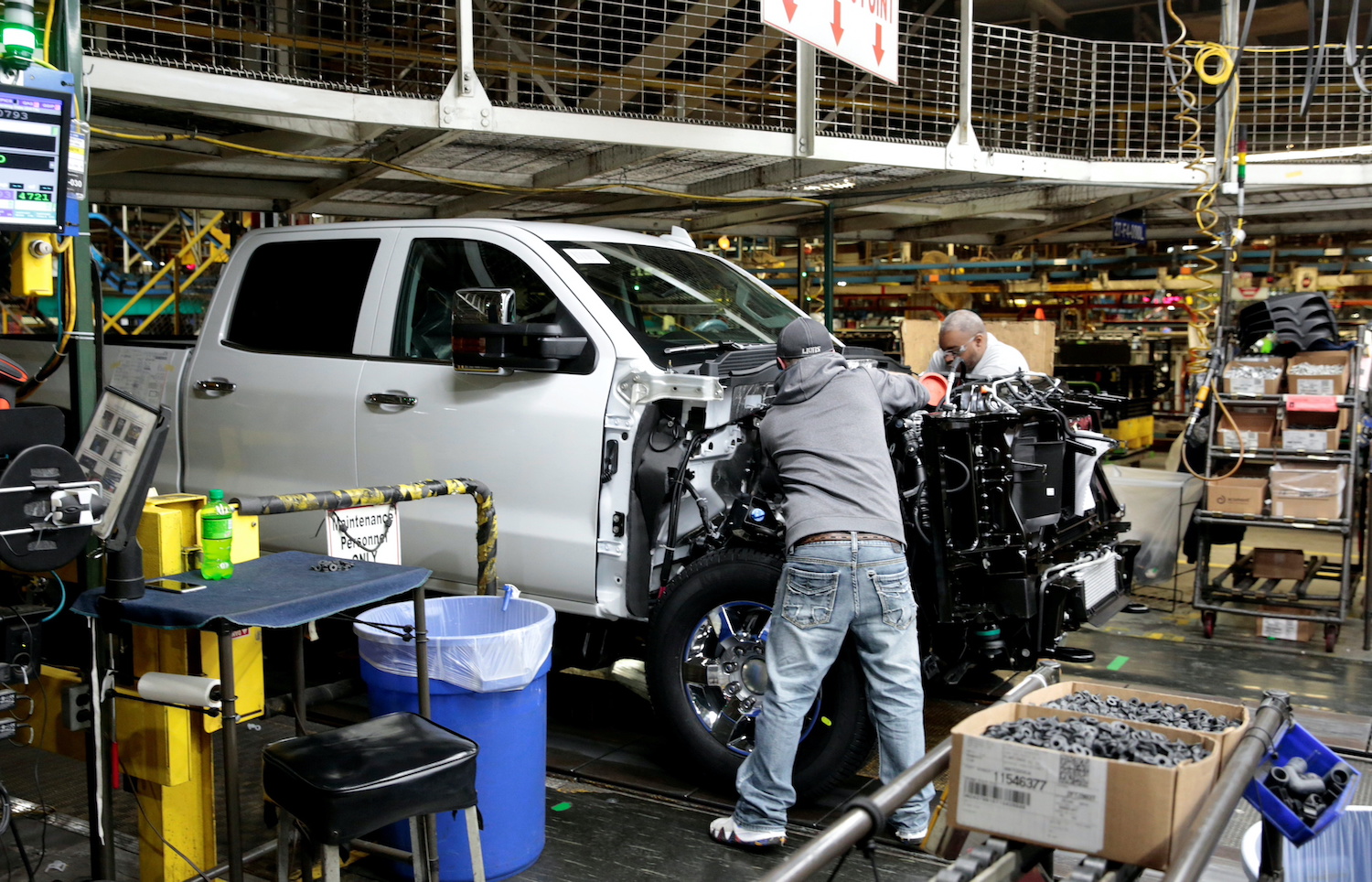Automakers in North America plan to build more big pickups and sport utility vehicles than electric vehicles well into the late 2020s.
Despite the Biden administration’s goal of boosting EVs to half the market by 2030, internal production forecasts have revealed Detroit plans to continue pushing out big trucks for much of the rest of the decade.
Observers say their continued popularity is a challenge both to the industry and efforts by lawmakers and regulators to reduce emissions of carbon dioxide and other exhaust gas pollutants from combustion engines.
Also on AF: China’s Under-Fire Didi Vows to Improve Driver Pay Transparency
Unflagging demand among American consumers for full-size trucks and SUVs, among the industry’s most profitable vehicles, will largely fund a combined $100 billion in investment commitments for new North American EV and battery plants by General Motors, Ford Motor and Stellantis.
At the same time, Detroit’s combustion-powered large pickup trucks and SUVs generate on average more than twice the CO2 over their lifetimes as the typical electric vehicle.
The three automakers, in a joint statement on August 5, described Biden’s target of pushing EVs to 40-50% of production by 2030 as a “shared aspiration”.
But that goal would mean boosting annual North American output of electric and plug-in hybrid electric vehicles to 7 million or more.
HYBRID FORECASTS
The entire industry, however, is planning as of now to build just 2.6 million battery electric vehicles (BEV) and another 585,000 plug-in hybrid electric vehicles (PHEV) in 2028, according to AutoForecast Solutions (AFS).
If automakers stick to those plans, EVs would account for just 15% of total North American production in 2028, with plug-in hybrids representing another 3.4%.
That would mean automakers would have to more than double EV and PHEV production within two years between 2028 and 2030 in order to hit Biden’s low-end target of 40%.
The US Environmental Protection Agency said it expects electric and hybrid vehicles to account for 8% of US car and light truck sales by 2026, a shade under AutoForecast’s projection of 10-11%.
CLIMATE GOALS
“Far more demand for electric vehicles will be needed in order to hit the 2030 goal of 40-50%,” said Sam Fiorani, head of AFS global vehicle forecasting. But “many buyers will come up with excuses not to make the switch” to EVs from vehicles with combustion engines.
That shortfall in EV demand, while pickup and SUV sales remain robust, could hamper a broader effort to combat climate change.
“We’re going to have to find some way to make those predictions fall short,” said Mary Nichols, former chair of the California Air Resources Board and a longtime clean-air advocate.
“It’s not just about the companies, (which) are doing their best to design and build electric vehicles that people want and make sure there are batteries that get greater range and that there will be charging available. That part is moving pretty fast (but) it’s going to have to go faster,” said Nichols, a board member of Veloz, a California-based industry-government coalition advocating greater electric vehicle use.
GLOBAL VOLUMES
Automakers have been careful to frame their electric vehicle sales goals as dependent on consumer demand and government subsidies.
“We’ve said for months that Ford expects battery-electric vehicles to be at least 40% of our global volume by 2030. That’s not an aspiration – it’s what we’re anticipating,” a Ford spokesperson said. “We believe we’ll be well-positioned for BEVs to account for 40% to 50% of our US sales by then.”
GM reiterated what it termed its “aspiration” to eliminate tailpipe emissions from light-duty vehicles by 2035, as well as its aspiration to push EVs to 40-50% of its sales volume by 2030.
But the industry this year expects to build 3.3 million full-size pickups and SUVs in North America, according to the latest AFS forecast. Virtually all of them will be powered by gasoline or diesel engines. In 2028, that number is expected to climb to 3.75 million – and only a fraction of those will be offered with electric motors and battery packs.
- Reuters and Sean O’Meara
Read more:
Ford restarts production at plants but semiconductor headwinds remain
GM calls for tax credit extension to boost US electric car sales























